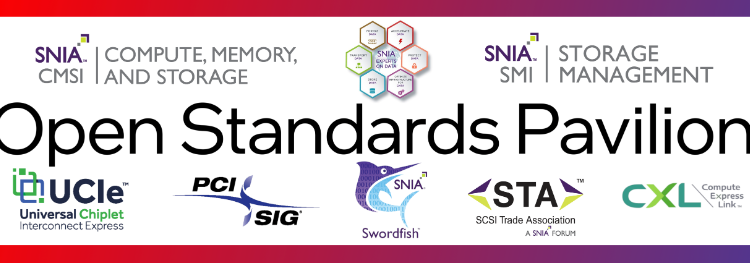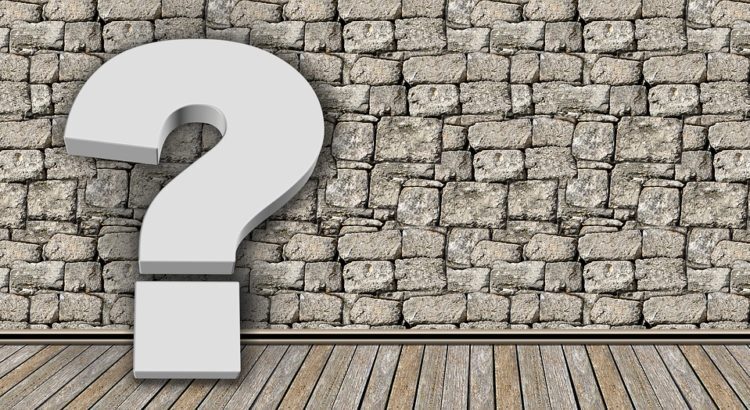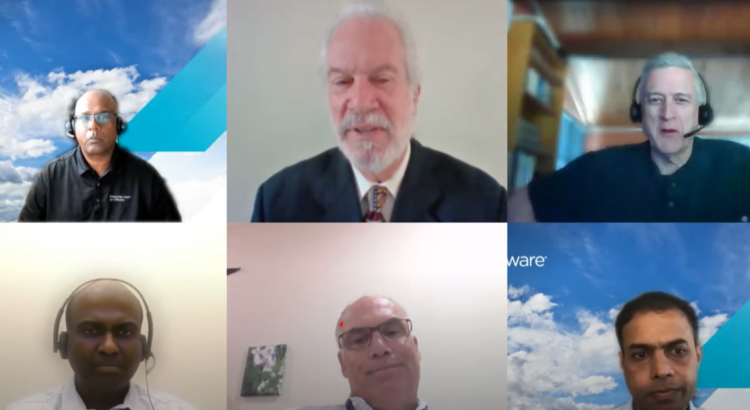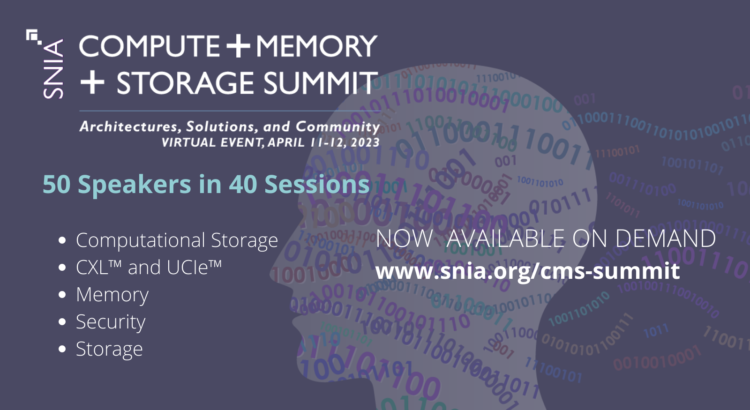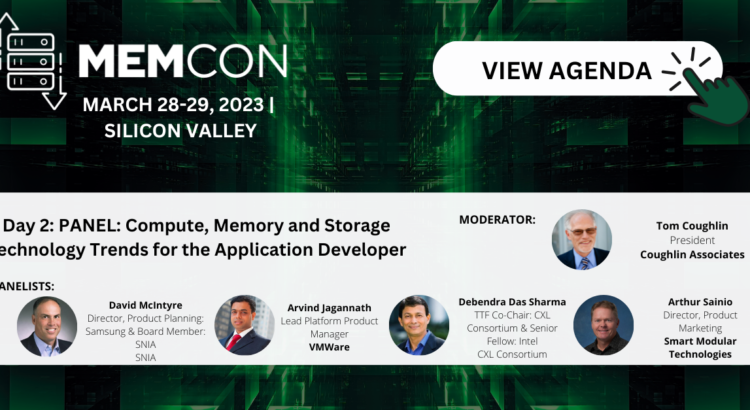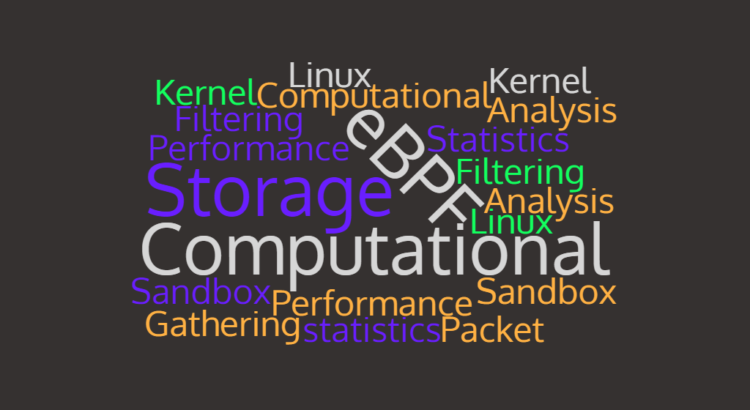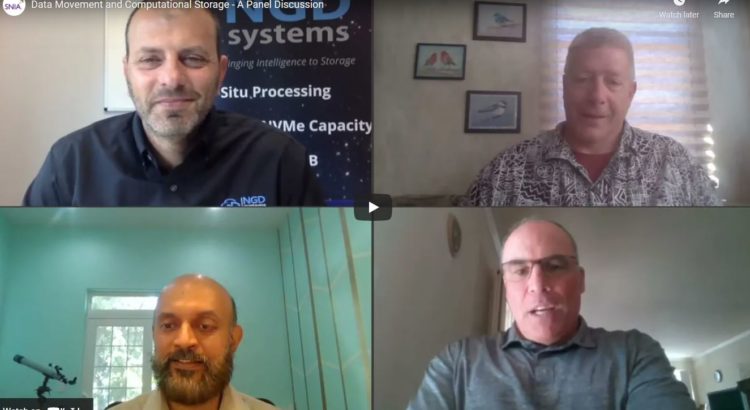SNIA’s Compute+Memory+Storage Summit is where architectures, solutions, and community come together. Our 2023 Summit – taking place virtually on
April 11-12, 2023 – is the best example to date, featuring a stellar lineup of 50 speakers in 40 sessions covering topics including computational storage real-world applications, the future of memory, critical storage security issues, and the latest on SSD form factors, CXL

, and UCIe

.
“We’re excited to welcome executives, architects, developers, implementers, and users to our 11
th annual Summit,” said David McIntyre, C+M+S Summit Co-Chair, and member of the SNIA Board of Directors. “We’ve gathered the technology leaders to bring us the latest developments in compute, memory, storage, and security in our
free online event. We hope you will watch live to ask questions of our experts as they present, and check out those sessions you miss on-demand.”
Read More
 (CXL
(CXL ), PCI-SIG®, and Universal Chiplet Interconnect Express
), PCI-SIG®, and Universal Chiplet Interconnect Express (UCIe
(UCIe ) in an Open Standards Pavilion, Booth #725, in the Exhibit Hall. CMSI will feature SNIA member companies in a computational storage cross industry demo by Intel, MINIO, and Solidigm and a Data Filtering demo by ScaleFlux; a software memory tiering demo by VMware; a persistent memory workshop and hackathon; and the latest on SSD form factors E1 and E3 work by SNIA SFF TA Technical work group. SMI will showcase SNIA Swordfish® management of NVMe SSDs on Linux with demos by Intel Samsung and Solidigm.
CXL will discuss their advances in coherent connectivity. PCI-SIG will feature their PCIe 5.0 architecture (32GT/s) and PCIe 6.0 (65GT/s) architectures and industry adoption and the upcoming PCIe 7.0 specification development (128GT/s). UCIe will discuss their new open industry standard establishing a universal interconnect at the package-level.
SNIA STA Forum will also be in Booth #849 – learn more about the SCSI Trade Association joining SNIA.
These demonstrations and discussions will augment FMS program sessions in the SNIA-sponsored System Architecture Track on memory, computational storage, CXL, and UCIe standards. A SNIA mainstage session on Wednesday August 9 at 2:10 pm will discuss Trends in Storage and Data: New Directions for Industry Standards.
SNIA colleagues and friends can receive a $100 discount off the 1-, 2-, or 3-day full conference registration by using code SNIA23.
Visit snia.org/fms to learn more about the exciting activities at FMS 2023 and join us there!
The post Open Standards Featured at FMS 2023 first appeared on SNIA Compute, Memory and Storage Blog.
) in an Open Standards Pavilion, Booth #725, in the Exhibit Hall. CMSI will feature SNIA member companies in a computational storage cross industry demo by Intel, MINIO, and Solidigm and a Data Filtering demo by ScaleFlux; a software memory tiering demo by VMware; a persistent memory workshop and hackathon; and the latest on SSD form factors E1 and E3 work by SNIA SFF TA Technical work group. SMI will showcase SNIA Swordfish® management of NVMe SSDs on Linux with demos by Intel Samsung and Solidigm.
CXL will discuss their advances in coherent connectivity. PCI-SIG will feature their PCIe 5.0 architecture (32GT/s) and PCIe 6.0 (65GT/s) architectures and industry adoption and the upcoming PCIe 7.0 specification development (128GT/s). UCIe will discuss their new open industry standard establishing a universal interconnect at the package-level.
SNIA STA Forum will also be in Booth #849 – learn more about the SCSI Trade Association joining SNIA.
These demonstrations and discussions will augment FMS program sessions in the SNIA-sponsored System Architecture Track on memory, computational storage, CXL, and UCIe standards. A SNIA mainstage session on Wednesday August 9 at 2:10 pm will discuss Trends in Storage and Data: New Directions for Industry Standards.
SNIA colleagues and friends can receive a $100 discount off the 1-, 2-, or 3-day full conference registration by using code SNIA23.
Visit snia.org/fms to learn more about the exciting activities at FMS 2023 and join us there!
The post Open Standards Featured at FMS 2023 first appeared on SNIA Compute, Memory and Storage Blog.
